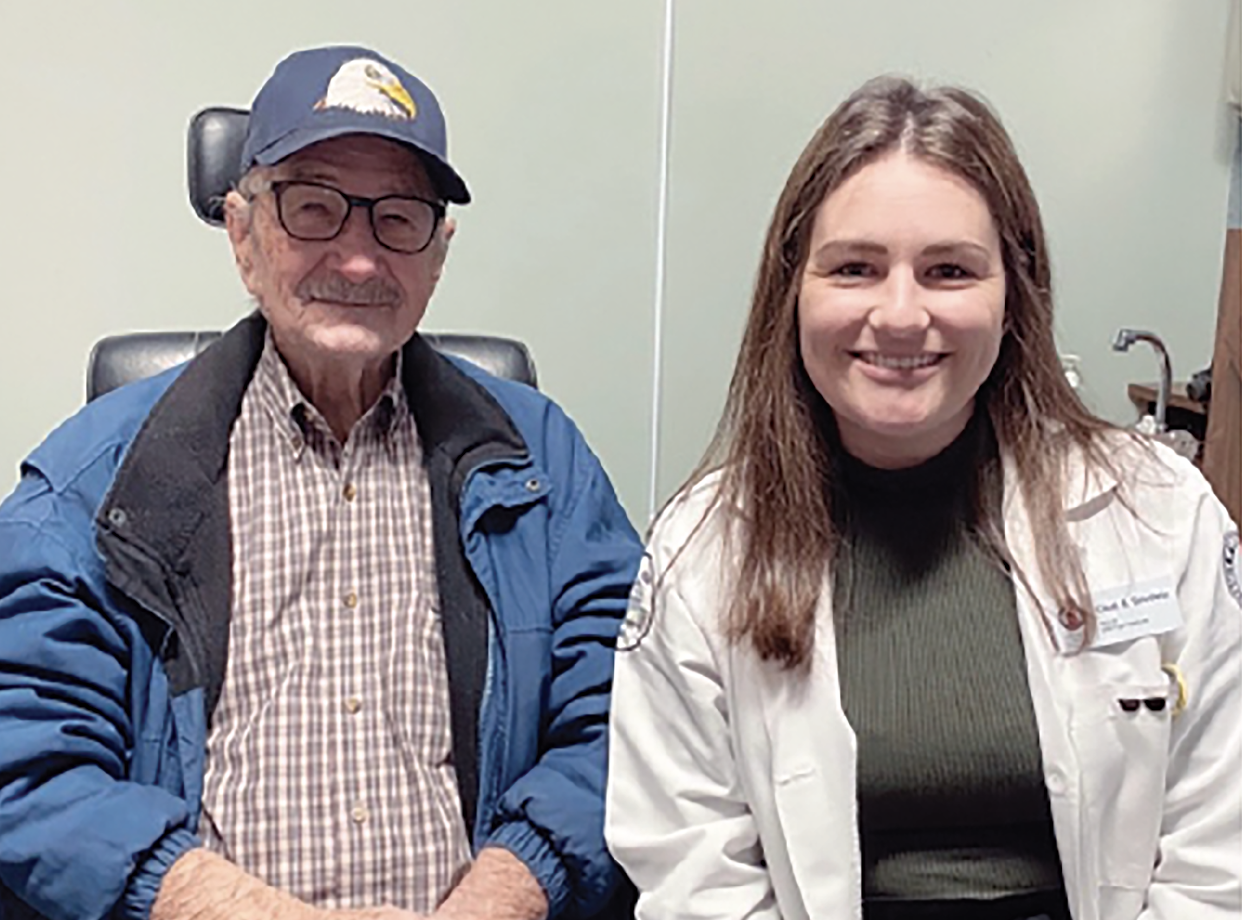 |
Q:
What considerations should be given when performing eye examinations on patients who are deaf?
“As a hearing and seeing individual, we often take these senses for granted. But as optometrists, we have the privilege of understanding how valuable and precious the gift of sight is,” says Ciara A. Goodwin, a fourth-year student at Rosenberg School of Optometry at University of the Incarnate Word and a recent student extern at Omni Eye Services of Atlanta. “Deaf individuals rely on sight as their number-one form of communication, so imagine how difficult life can be when your only form of communication begins to decline.”
When an 80-year-old totally deaf male was referred to the Omni Atlanta practice for a cataract evaluation accompanied by his totally deaf daughter, Ms. Goodwin was willing to take on the task, having had four years of American Sign Language (ASL) training.
The patient was thoroughly evaluated by Ms. Goodwin and met all the criteria for surgery. She made sure that he understood all the details of the procedure and helped to schedule each eye two weeks apart. “Since it had been a while since I had had full conversations with others in ASL, I boned up on my knowledge of medical signs and made sure to look up any words or phrases that could be used in an eyecare setting to better aid in communicating with him throughout his two surgeries and post-op visits,” she notes.
On surgery day, the patient was instructed on directional touch, where he was taught by the extern to adjust his line of sight toward the direction of gaze that the surgeon was tapping around the eye. Ms. Goodwin was with him every step of the way, from pre-op to surgery and recovery.
 |
|
The patient with Omni extern Ciara Goodwin. (Photo taken and used with patient’s consent.) Click image to enlarge. |
The surgery itself was successfully completed in under seven minutes! At the one-day follow-up visit, the patient was smiling ear to ear and told Ms. Goodwin how much his vision had improved. The patient and his daughter expressed how fortunate they were to have someone available who could communicate with them in their language.
As his interpreter, Ms. Goodwin certainly played a major role in the success of the surgery process. “Imagine, for a moment, how much courage it takes to have eye surgery while not being able to hear,” she says.
Scout’s Motto
Ms. Goodwin has provided a list that can help us be prepared with the proper accommodations for patients who are hearing-impaired.
1. In the case of partially hearing-impaired patients, there is no need to yell or talk extremely slow. Proper pronunciation at an appropriate speed will work just fine. If they have a better-hearing ear, speak closer to that side.
2. Always face your patient, as lip reading is often used by people with various degrees of hearing loss.
3. If an interpreter is not available, invest and familiarize yourself with interpreting apps such as “Jeenie: 24/7 Live Interpreting” or website resources such as www.rid.org.
4. Provide reading material (e.g., pamphlets, drug sheets, instructions) in large enough font for all patients to read and understand.
5. Keep an inclusive office. Supply dry-erase boards and markers or paper and pens for easier communication, along with various common symptom surveys that can be filled out beforehand.
6. Allow patients to sign or draw the alphabet during visual acuity testing as some prefer not to speak.
7. A reminder that the Americans with Disabilities Act, Section 504 of the Rehabilitation Act of 1973, states that public accommodations, such as doctors’ offices, are required to provide ASL interpreters and other auxiliary aids to ensure effective communication with deaf and hard of hearing individuals.1 Remember that you are responsible for providing a translator if the patient does not have one, including the cost of the translator and their travel time to and from the practice.2
“Just imagine if you were unable to communicate with these patients,” Ms. Goodwin emphasizes. There are countless resources available to better aid both deaf and hard-of-hearing patients with the best visual outcome possible.
Dr. Ajamian is board certified by the American Board of Optometry and serves as Center Director of Omni Eye Services of Atlanta. He is vice president of the Georgia State Board of Optometry and general CE chairman of SECO International. He has no financial interests to disclose.
1. Your rights under section 5043 of The Rehabilitation Act. US Department of Health and Human Services. www.hhs.gov/sites/default/files/ocr/civilrights/resources/factsheets/504.pdf. Accessed January 18, 2024.. 2. ADA requirements: effective communication. US Department of Justice Civil Rights Division. www.ada.gov/resources/effective-communication. Last updated February 28, 2020. Accessed January 18, 2024. |

